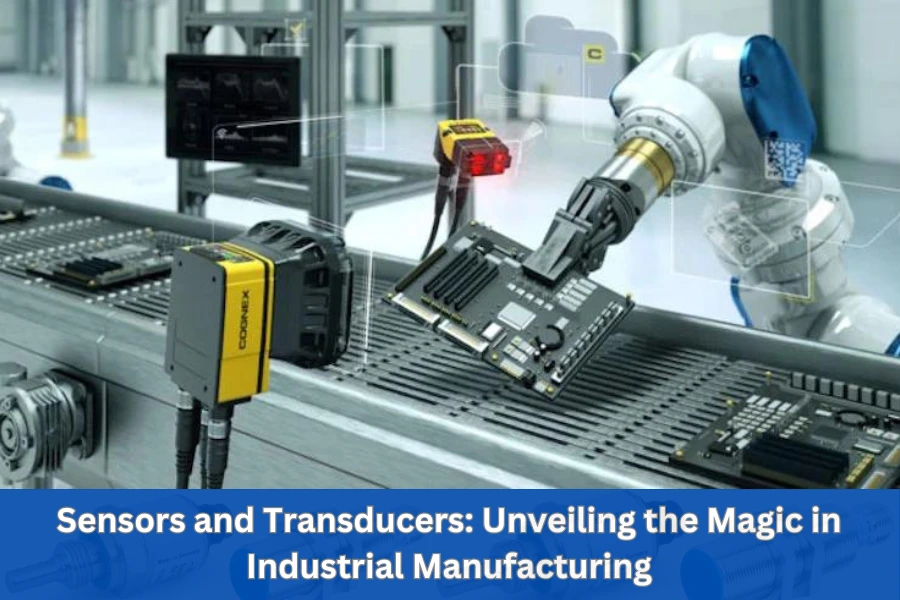
Hey there, curious minds! Today, we’re diving into the fascinating world of “Sensors and Transducers” from the perspective of Industrial Manufacturing. So buckle up, because we’re about to demystify these tech wonders in a way that even your grandma would nod along!
“Sensors and transducers are the unsung heroes of industrial manufacturing, ensuring the show goes on without a hitch.“
What’s the Buzz About Sensors and Transducers?
Alright, let’s start with the basics. Imagine your favorite superhero with super senses – Sensors are like the superheroes of machines. They are the eyes, ears, and noses of our industrial buddies. They sniff, see, and hear things we can’t, making sure everything runs smoothly.
Meet the Sensors: Our Machine Superheroes
In the industrial realm, sensors are tiny marvels that detect changes in their environment. It could be anything from temperature shifts to detecting if a product is in the right place at the right time. Think of them as the guardians of quality control in manufacturing.
Now, if sensors are the eyes, transducers are the storytellers. They convert the signals from sensors into a language machines understand. It’s like translating a foreign movie – they make sure everyone in the machine world is on the same page.
The Dynamic Duo: How Sensors and Transducers Work Together
Imagine a dance floor. Sensors pick up the beats – the changes in the surroundings. They then pass this info to the transducers, who turn it into dance moves the machines can groove to. It’s a tight partnership, ensuring that every step in manufacturing is flawless.
Let’s Break it Down: How Sensors Do Their Thing
Sensing Temperature Changes: Sensors can be like weather reporters for machines. They tell if it’s getting too hot or chilly. This is crucial in industries where the right temperature can make or break a product.
Detecting Movement: Imagine playing hide and seek with your dog. Sensors play a similar game but with products in a manufacturing line. They ensure everything is where it should be, avoiding chaos.
Checking Pressure: Just like your grandma checking if the soup is ready by pressing the spoon against the pot, sensors check pressure in machines. This prevents any ‘soup spills’ in the manufacturing process.
Transducers: The Master Interpreters
Now, transducers take the information from sensors and transform it into a language machines comprehend. It’s like a translator at the United Nations – making sure everyone understands the message.
Why Should We Care? The Real-World Impact
Let’s bring this home. Why should we care about these machine superheroes?
Boosting Efficiency with sensors and transducers
In the grand theater of industrial manufacturing, sensors and transducers are the backstage crew. They ensure everything is in place, costumes are right, and the spotlight hits at the perfect moment. This boosts efficiency, meaning products are made faster without compromising quality.
Preventing Catastrophes
Ever spilled coffee on your keyboard? Not fun, right? Sensors help prevent ‘spills’ in machines by detecting irregularities early on. This proactive approach saves industries from disasters and keeps the production line smooth.
Saving the Environment (Yes, Really!)
Sensors are like environmental superheroes. They help industries monitor energy consumption and reduce waste. It’s like turning off the lights when you leave a room, but on an industrial scale.
The Future of Sensors and Transducers: A Sneak Peek
As technology evolves, so do our industrial superheroes. The future promises even smarter sensors and transducers, capable of understanding complex situations like a seasoned detective. We’re talking about machines that practically read minds – predicting issues before they even happen.
Smart Factories with sensors and transducers
Imagine a factory that knows when a machine needs a break before it even asks. That’s the future we’re heading towards – smart factories where sensors and transducers are the brains behind the operation.
Practical Application: Making Sense of Sensors in Your Everyday Life
Let’s keep it real. Imagine you’re at the grocery store, eyeing those fresh veggies. Sensors and transducers work like the store’s quality control squad. They ensure the veggies are at the right temperature in those coolers, so they stay crisp and tasty. If the temperature goes wonky, these heroes alert the staff, preventing a veggie tragedy. So, next time you grab a perfect cucumber, thank the sensors silently doing their job.
Real-world Impact: How Sensors Save the Day in Manufacturing
Picture a car assembly line. Sensors are the silent guardians here. They detect any glitches in the system, ensuring every bolt is in place. Now, imagine a faulty sensor – chaos, right? That’s why these little wonders undergo rigorous testing. A single sensor hiccup could mean cars with loose bolts hitting the road. Thanks to sensors, your drive is smooth, and your safety is prioritized.
“In the world of smart factories, sensors become the brains behind the operation, predicting issues before they even happen.“
Conclusion: The Wrapping of Sensors and Transducers Saga
In a nutshell, sensors and transducers are the unsung heroes of industrial manufacturing. They ensure the show goes on without a hitch, preventing disasters, saving energy, and propelling us into the era of smart factories.
So, the next time you see a product that’s just right or experience a smooth industrial process, tip your hat to the real MVPs – Sensors and Transducers, the wizards behind the curtain, making magic happen in the world of industrial manufacturing!

Temperature Sensors























